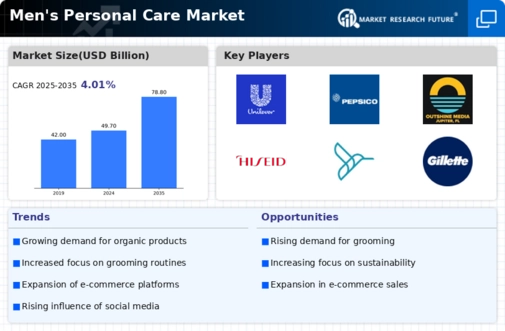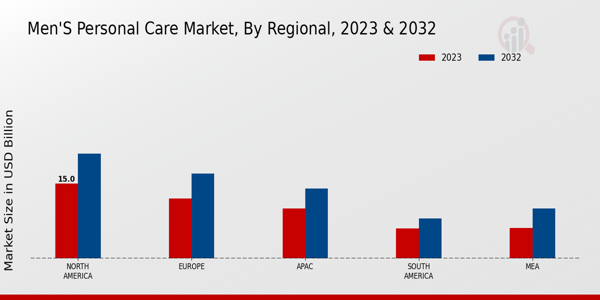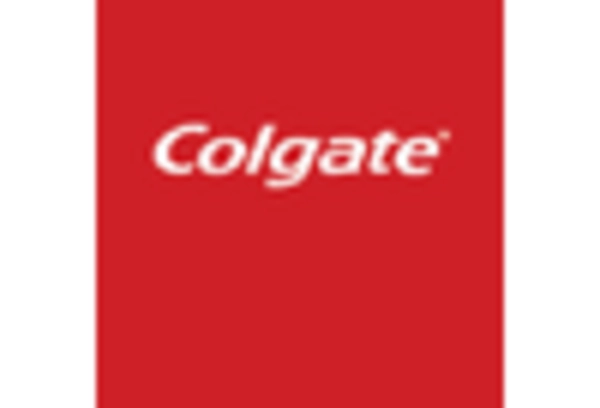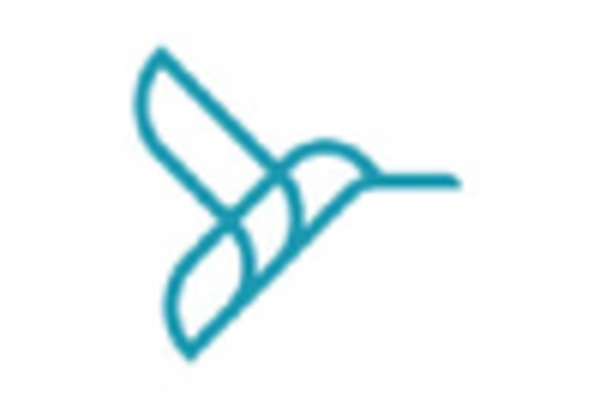Influence of E-commerce
The rapid growth of e-commerce platforms is transforming the Men's Personal Care Market. With the convenience of online shopping, men are increasingly purchasing grooming products through digital channels. This trend is supported by data indicating that e-commerce sales in the personal care sector have surged, with estimates suggesting a growth rate of over 20% annually. The ability to access a wider range of products and brands online allows consumers to make informed choices, enhancing their shopping experience. Furthermore, the rise of subscription services for grooming products is likely to foster customer loyalty and repeat purchases, thereby driving market growth.
Growing Awareness of Grooming
The increasing awareness of personal grooming among men appears to be a pivotal driver in the Men's Personal Care Market. As societal norms evolve, more men are embracing grooming routines that were traditionally associated with women. This shift is reflected in the rising sales of grooming products, with the market projected to reach approximately 166 billion USD by 2026. The emphasis on self-care and appearance is likely to encourage men to invest in a variety of personal care products, including skincare, haircare, and fragrances. This trend suggests that brands focusing on male grooming will find ample opportunities to expand their offerings and cater to a more discerning male consumer base.
Rise of Male-Specific Products
The emergence of male-specific personal care products is reshaping the Men's Personal Care Market. As brands develop products tailored specifically for men's unique skin and hair types, the market is likely to see increased demand. This trend is evidenced by the introduction of specialized skincare lines and grooming tools designed for men. Market data suggests that the male grooming segment is expected to grow at a compound annual growth rate of 6% over the next five years. This growth indicates that men are increasingly seeking products that cater to their specific needs, creating opportunities for brands to differentiate themselves in a crowded marketplace.
Shift Towards Sustainable Products
The Men's Personal Care Market is witnessing a notable shift towards sustainability, as consumers become more environmentally conscious. Brands that prioritize eco-friendly ingredients and packaging are likely to attract a growing segment of the market. Research indicates that approximately 60% of men are willing to pay more for sustainable products, which suggests a significant opportunity for brands to innovate in this space. This trend not only aligns with consumer values but also encourages companies to adopt sustainable practices, potentially leading to a more responsible industry overall. As sustainability becomes a key purchasing criterion, brands that fail to adapt may find themselves at a competitive disadvantage.
Impact of Health and Wellness Trends
The growing focus on health and wellness is significantly influencing the Men's Personal Care Market. As men become more health-conscious, they are increasingly seeking products that promote not only appearance but also overall well-being. This trend is reflected in the rising popularity of natural and organic personal care products, which are perceived as healthier alternatives. Market Research Future indicates that the organic personal care segment is projected to grow at a rate of 8% annually. This shift towards health-oriented products suggests that brands that align their offerings with wellness trends may capture a larger share of the market, appealing to a demographic that values both efficacy and safety.


















Leave a Comment